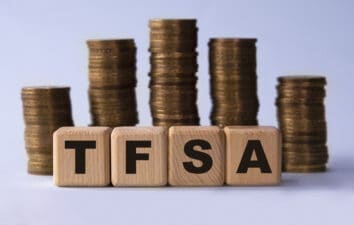The Canada Emergency Response Benefit (CERB) is, unquestionably, the most successful COVID-19 benefits program in 2020. It was extended, not once, but twice. The initial duration was 16 weeks, then 24, and finally 28 weeks, with the program culminating on September 27, 2020. Total payments per individual could reach $14,000.
Introducing CERB was crucial because about 40% of unemployed or displaced Canadian workers wouldn’t qualify for Employment Insurance (EI) in March.
Will the flagship COVID-19 program make a comeback in 2021? There are no indications it will. However, it became the basis for policy innovation and refinements in the ensuing recovery benefits in the last quarter of 2020.
EI revamp for easy access
The EI system was burdened by the massive volume of Canadians claiming federal benefits. The Canada Revenue Agency (CRA) came to the rescue through CERB. Meanwhile, the government saw the opening to make technical upgrades to the EI system and relax eligibility rules while CERB was ongoing.
The transition to EI began as soon as CERB officially ended. With the one-time top-up in hours credit, you only need 120 insurable hours to be eligible for EI regular or special benefits.
If your EI claim is between September 27, 2020, and September 25, 2021, you will receive a minimum benefit rate of $500 per week or $300 per week for extended parental benefits, less applicable taxes. An EI claim is for a minimum of 26 weeks.
CRB for non-EI recipients
The Canada Recovery Benefit (CRB) is the direct replacement of CERB, particularly for employed and self-employed individuals who will not qualify for EI. The taxable benefit amount is the same or $500 per week, with a few tweaks on disbursements. CRB is available from September 27, 2020, to September 25, 2021.
If a claimant goes the full route of 26 weeks, the total CRB payment would be $13,000. However, the eligibility period is every two weeks or 13 in its entirety. The CRA will dispense $900 ($1000 minus 10% tax). Renewal is not automatic, so must re-apply after the eligibility period has elapsed.
Boost your income
COVID-19 highlights the importance of having financial stability during a crisis. It’s good the government prioritizes the welfare of its citizens. But it wouldn’t hurt to boost monthly income if your finances allow. TELUS (TSX:T)(NYSE:TU) makes the grade as an excellent income source in the post-COVID world.
The second-largest telecom in Canada pays a lucrative 5.11% dividend while maintaining a low 40.27% payout ratio. If you own $25,000 shares, the annual income boost is $1,277.50. There’s no need to dwell on the merits of TELUS as an investment option. Communication services, digital tools, and connectivity are essential needs throughout the pandemic and beyond.
The impact of COVID-19 on the industry is moderate, although TELUS’s income could be sluggish at times due to the massive CAPEX requirements. Compared with BCE and Rogers Communications, the company has no media-related risks whatsoever. Also, the work-from-home trend augurs well, perhaps a growth catalyst.
CERB legacy
Canadians will always remember CERB as the pandemic’s legacy. While EI and CRB are worthy replacements, either one won’t be as popular as the original and widely available federal dole-out in 2020.








